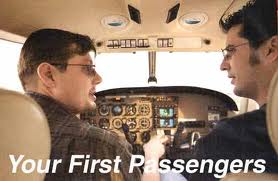
Throughout my training I believe the one thing my instructor imbedded in my head and sometimes on the back of it was air speed, air speed, air speed. Out of all the areas of training I went through I can honestly say I don’t remember very much if any talk of a proper “Passenger Brief”.
For a passenger who has no or little time in a small aircraft it may prove to be very beneficial to inform them on just what to expect during your proposed adventure. Even if your passenger is accustom to flying commercial airlines it is a whole different world in private aviations smaller aircraft. Some areas of your briefing will be the same as the larger airlines. Other areas will be unique to general aviation. I personally don’t believe the preflight passenger brief must be done in any particular order as long as it is very thorough.
First you will want to show each passenger how to lock and unlock each door. If the cargo door is accessible to the cabin you will want to show them how it can be used as an emergency exit as well.
The seatbelt brief is also a familiar commercial brief. Each passenger should demonstrate how to not only put on but to quickly release the safety belts in case of emergency. Far part 91.107 states your passengers must wear their harness during taxi, takeoff and landing. Do yourself a favor, be safe and require them to wear it throughout the entire flight.
Next you should cover the possibility of motion sickness. Inform each passenger on where to find and how to use the air sickness bags if necessary.
For any front seat occupant you should include a “Don’t Touch” rule. This rule will cover not touching any of the fun looking buttons or knobs. You will also want to remind them to not rest their feet on the pedals. Once you have established cruse and safe flight you can let the front seat passenger know how they can help by holding the map, watching for traffic or even take control during straight and level flight. Share your joy of flying with others by letting them be a part of the flight.
I personally also like to add a “No Talking” rule during taxi, take off and landing. The only exception is in the event of an emergency. As a pilot remember that most radios have an isolation button to block your other occupants if necessary.
Flying as a private pilot is meant to be fun. Just as a good landing is set up long before touchdown, a safe flight is made before you ever leave the ground.
By: Tommy Eldridge
Private Pilot Insider


